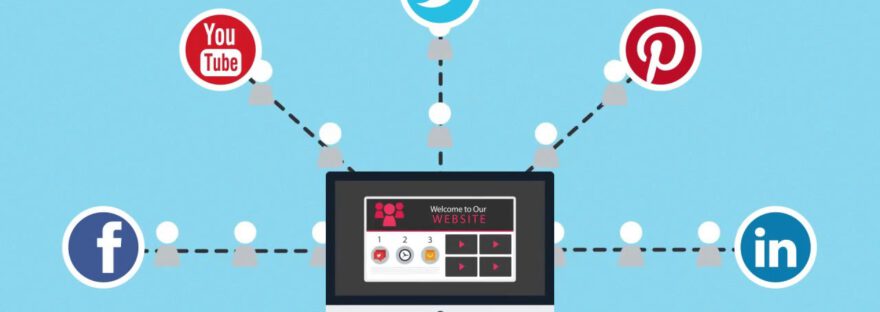Social media marketing delivers invaluable customer data, but tracking and measuring results can also take time. Rank Boss has a primary goal to focus on and sets measurable outcomes for each reporting period.
Learn how to manage social media accounts, analyze data, and develop advertising campaigns with this Meta certification program. Build job-ready skills and earn a professional credential—for free!

A content strategy is a plan that outlines how you will use social media marketing to achieve your business goals. It should include how often you will publish content, what your target audience is looking for, and how to measure success.
A strong content strategy allows you to create and distribute content that is relevant to your target audience, which will ultimately help to increase engagement and reach for your brand on social media. It will also make it easier to meet your business objectives through content marketing.
The first step in creating a content strategy is to identify the goals you want to achieve. This may seem obvious, but it is important to take the time to clearly define your goals and understand what you will need to do in order to achieve them. This can be done by using the SMART framework to help you set attainable and realistic goals.
Next, you will need to determine what types of content your audience is interested in. This can be accomplished by analyzing the data from your existing social media accounts as well as through research tools like BuzzSumo. Using this information, you will be able to create a content calendar that is in line with your audience’s interests and business goals.
Once you have determined the type of content your audience is interested in, it’s time to start planning how and when this will be created and published. It is crucial to have a detailed content plan in place, especially if you are working with limited resources. A content strategy helps ensure that your team is on the same page and that everyone knows what needs to be done and when.
Finally, it is important to monitor and analyze your content performance on a regular basis. This will allow you to adjust and optimize your content for best results over time. Keeping track of your metrics will also allow you to see the direct impact that your content is having on your business objectives. This will help you to justify the time and resources that are going into your social media marketing efforts.
Social listening involves tracking social media conversations that mention your brand or products and gathering insights. It can be done manually, but it is usually more effective to use a tool or platform. While there are free tools available, they are often limited in what they can do. A paid tool, like Clarabridge or HubSpot, can offer more comprehensive services, such as monitoring competitor mentions, tracking brands and topics of interest, finding influencers, conducting consumer research, etc.
The main benefit of social listening is that it helps businesses understand their customers better. This allows them to serve their needs more effectively, even when those needs are not immediately obvious. For example, a customer may not be ready to buy your product right away, but they might be interested in buying it in the future. If you keep an eye on social media conversations and follow the three A’s (acknowledge, answer, and address), you will be able to make sure your business is top of mind when that customer does decide to purchase.
Another big advantage of social listening is that it can help businesses stay on top of their competition. By staying aware of what their competitors are doing, businesses can learn from them and take action. This could include avoiding a mistake they’ve made or capitalizing on a strength that their competitors don’t have.
In addition, social listening can be used to track negative feedback and potential crisis situations. By setting up alerts and having a team dedicated to dealing with them, a business can ensure it is the first one to know about problems with its products or services. This allows the company to respond quickly and appropriately, minimizing damage and keeping its reputation intact.
Lastly, social listening can also be used to track industry events and trends that are important to your audience. By doing so, you can be a resource for your audience and build loyalty with them. If you have a good understanding of your target market, you can be the first to tell them about new products or changes in your industry that might impact them.
A social media competitor analysis is a critical business tool that helps you evaluate your brand’s performance. It involves identifying your competitors, analyzing their strengths and weaknesses, and assessing the potential threats they pose to your business. It is a form of SWOT analysis, and it can be conducted on a weekly, monthly, quarterly, or annual basis.
Before you can conduct a competitive analysis, you must first identify your competitors. You can do this by searching for your product or service name in Google or other search engines and looking at the results. Alternatively, you can survey or interview existing customers to see which brands they turned to when they didn’t purchase your product or service. Once you have a list of competitors, it’s time to start tracking them on social media.
The best way to track your competitors on social media is by using tools that automatically collect data and report it to you. These tools can help you find out which of your competitors are posting the most, what kind of content they’re sharing, and how quickly their following is growing. They can also tell you who your top competitors are on each platform.
Some of these tools are free, while others offer a more robust set of features at a premium price. Hootsuite Analytics is one such tool that does competitive analysis for Instagram, Facebook, and Twitter, allowing you to track up to 20 competitors per network. It also offers a clear view of your strengths and weaknesses in comparison to your competitors, plus actionable insights.
While it’s important to look at your current social media performance, it’s equally important to predict what may happen in the future. For example, if your competitor launches a new product or service that could steal customers away from you, you should analyze the potential impact of this development on your business and plan accordingly. To do this, you can create a future-facing chart, such as a growth or opportunity matrix, that can help you pinpoint these impacts.
Conducting a social media competitor analysis requires research and effort, but it can help you improve your marketing campaigns by highlighting opportunities and minimizing risks. To make it easier, use a competitor analysis template to guide you through the process.
Social media marketing is an essential part of a larger marketing strategy that can help companies boost visibility, drive website traffic, and generate leads. It includes a variety of techniques and strategies like using paid ads, organic content, influencers, and other forms of paid and unpaid marketing.
When it comes to social media advertising, the first step is to define your primary goals. Whether you want to increase brand awareness, engagement, or conversions, set clear objectives and focus on reaching those metrics. The next step is to research your target audience. This can be done through third-party software or by conducting a simple Google search. Look for information on demographics (age, gender, location), interests, and online behaviors. You can also learn a lot by analyzing competitors’ social media accounts.
Lastly, it’s important to create compelling content that highlights your unique value proposition and sets you apart from your competition. This will help you attract more customers and convert them into paying customers.
A great way to do this is by creating and promoting user-generated content (UGC). For example, Airbnb often features customer-created travel photos in their ads, which adds authenticity and trustworthiness. UGC can also be used in ads to promote promotions or new products.
One of the biggest advantages of social media marketing is the ability to quickly and easily monitor campaign performance. With the click of a button, marketers can see how their campaigns are performing and make adjustments as needed. This is especially useful when launching new products and services.
Social media marketing is a highly specialized and challenging field. It requires a deep understanding of the different platforms and their unique algorithms. In addition, the landscape is constantly changing. To succeed, marketers need to be able to think fast and adapt their strategy in real-time. The best social media marketers are creative, data-driven, and have excellent communication skills. They also have a strong understanding of marketing fundamentals. If you’re interested in working in this industry, it’s a good idea to get a bachelor’s degree in marketing or a related field and start by building up a portfolio of successful social media marketing campaigns.

